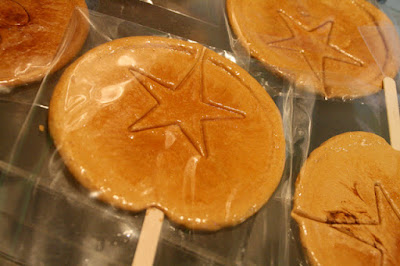Kkultarae
Korea has a row of delicious snacks. One of the unique is kkultarae. It looks like a roll of fine white thread, with a soft sweet taste. The way of selling is unique, because it is made directly in front of the buyer while sung with funny style.
Kkultarae is read ggool-ta-rae is a sweet dish made from honey that has been heated up to 3 days. Because of the duration of cooking, honey then hardened like a stone. Well, kkulturae made from honey is pulled like making noodles, with extra corn flour to avoid sticking.
One of its appeal kkultarae is that traders make it directly in front of buyers. Not just made, but the seller did it while singing and dispensing funny sentences. Most kkulturae traders do it in exactly the same way.
First of all, they will show you the frozen honey. To be sure if the honey is petrified, the honey is knocked on the window glass is clear. To attract buyers, they are convinced that the kkultarae made will amount to 16,000 pieces.
The next step is to pierce the hardened honey, then pulled slowly. Making exactly the same as making noodles that are withdrawn and then played. Penjualpun invites buyers to both calculate how many kkulturae strands. For example from 2 pieces of noodles, then rotated and into 4 pieces of noodles, then 8 sheets of noodles, 16, 32, 64, 128, and so on. If you have reached the desired level of thinness, then cut into pieces and filled with chopped peanuts, and give a delicious krenyes texture.
Theatrical action and the sweet, sweet taste become the attraction of kkultarae. From the beginning of the making to the whole, traders continue to give the spoken explanation while singing. Kkultarae is usually sold in the Insadong area.















